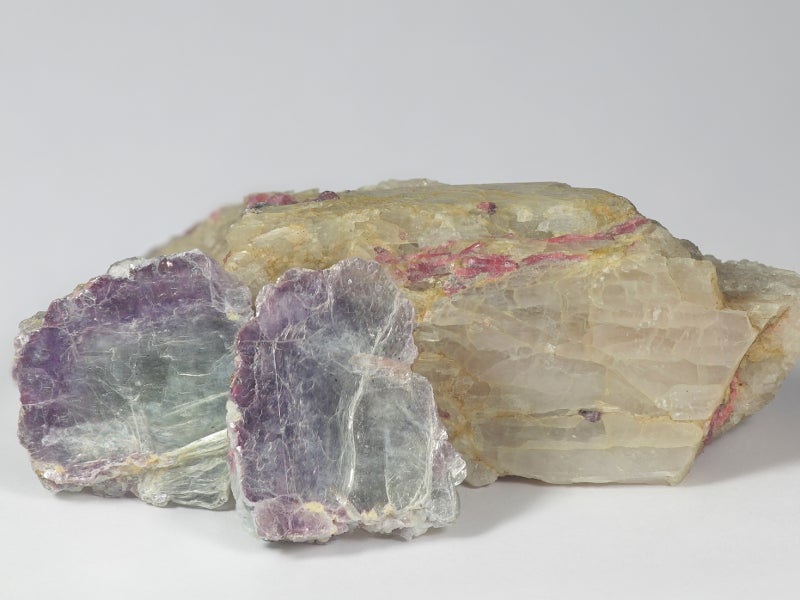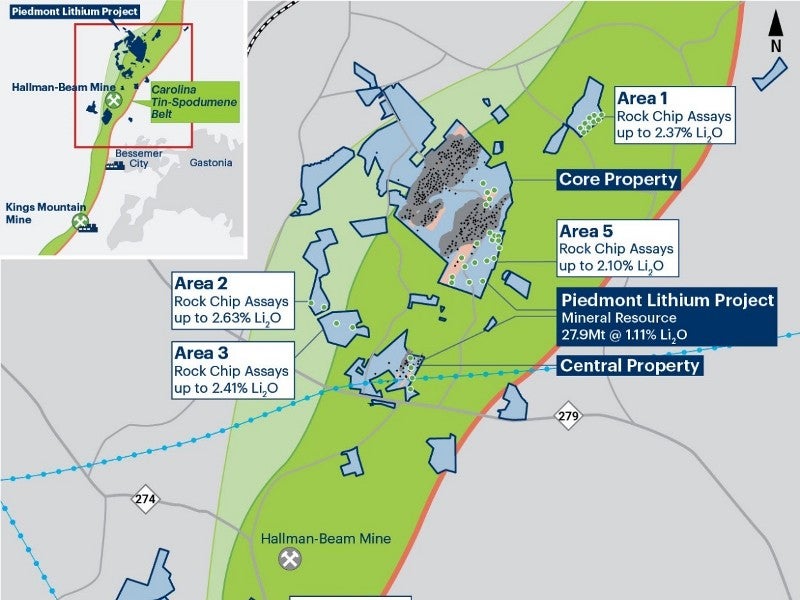The Piedmont lithium project is an open-pit spodumene mine along with a lithium hydroxide chemical plant proposed to be developed by Australia-based Piedmont Lithium in North Carolina, US.
A scoping study for the project was conducted in January 2018 and an updated mineral resource estimate was released in June 2019, while a pre-feasibility study (PFS) for the lithium hydroxide chemical plant of the proposed project was completed in May 2020.
The chemical plant is expected to have a lithium recovery rate of 85% based on the metallurgical test work conducted in 2019.
Piedmont Lithium plans to complete the chemical plant permit applications and the project’s definitive feasibility study (DFS) by the end of 2020.
The project is expected to produce up to 22,700 tonnes (t) of battery-grade lithium hydroxide (LiOH) a year over an estimated mines life of 25 years.
Location, geology, and mineralisation
The Piedmont lithium project is located approximately 40km west of the city of Charlotte, North Carolina, US.
The property lies in the Inner Piedmont belt next to the Kings Mountain shear zone and is easily accessible from the major east coast transportation corridor Interstate I-85, which is 13km south of the project site.
Situated within the Carolina tin-spodumene belt (TSB), the project comprises three deposits namely Central, Core, and Sunnyside that contain high-grade spodumene-bearing pegmatites.
Approximately 97% of the Core property resources lie within 150m below the surface and 74% are within 100m below the surface. The entire lithium resources at the deposit are attributed to spodumene mineralisation.
A part of the project was originally explored by Lithium Corporation of America in the 1950s and was later acquired by FMC (now Livent).
North Arrow Minerals conducted the historical diamond drilling programme on the property during 2009 and 2010, which included 19 holes totaling 2,544m. The subsequent drilling programmes conducted by Piedmont Lithium identified the presence of four high-grade lithium corridors over 4km of strike length.
Reserves at the Piedmont lithium project
The Piedmont lithium project was estimated to hold approximately 27.9 million tonnes (Mt) of indicated and inferred resources grading 1.11% Li2O (lithium oxide), as of June 2019.
The contained Li2O and lithium carbonate-equivalent (LCE) is estimated to be 309,000t and 764,000t respectively.
Mining and processing
Piedmont Lithium is considering the use of conventional open-pit methods of drill, blast, load, and haul to extract the spodumene ore.
The run-of-mine (ROM) feed will be delivered by truck to the ROM pad located next to the processing facility.
The project development includes a mine-to-hydroxide facility comprising a spodumene concentrator capable of producing 160,000t per annum of lithium concentrate grading 6% Li2O spodumene concentrate, and a lithium hydroxide chemical plant capable of producing produce 22,700 tonnes per annum (tpa) of LiOH.
The other by-products of the project will include 86kt of quartz, 125kt of feldspar, and 13kt of mica concentrate a year.
Contractors involved
Hatch was awarded a PFS contract for the lithium hydroxide chemical plant of the Piedmont Lithium project in December 2019.
Primero was appointed as the lead engineering consultant for conducting scoping studies, spodumene concentrator design, and metallurgical test work management in 2018.
Piedmont Lithium also entered a memorandum of understanding (MoU) with Primero for the definitive feasibility study (DFS), front-end engineering design, and commissioning of the spodumene concentrator on engineering, procurement, and construction (EPC) basis in June 2020.
SGS laboratories in Canada performed lithium hydroxide test work on samples of spodumene concentrate from the project site.
Marshall Miller & Associates was engaged for the planning services for the mine and concentrator, while Johnston, Allison & Hord was selected to provide legal advisory services.
CSA Global was engaged for the project’s scoping study, mine design, and mineral resource estimate, while Roskill was appointed to perform marketability analysis of lithium products, and HDR Engineering carried out permitting and environmental activities.





